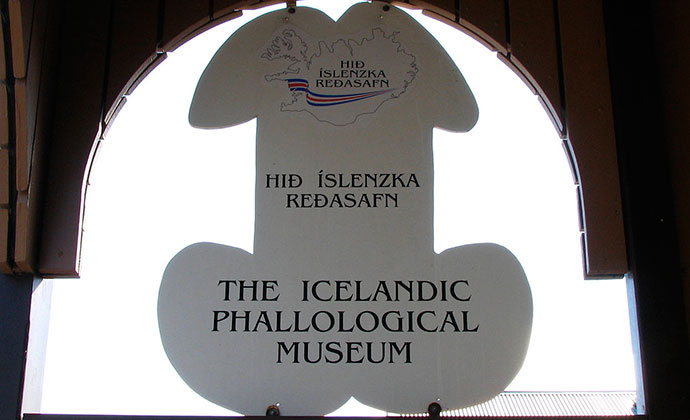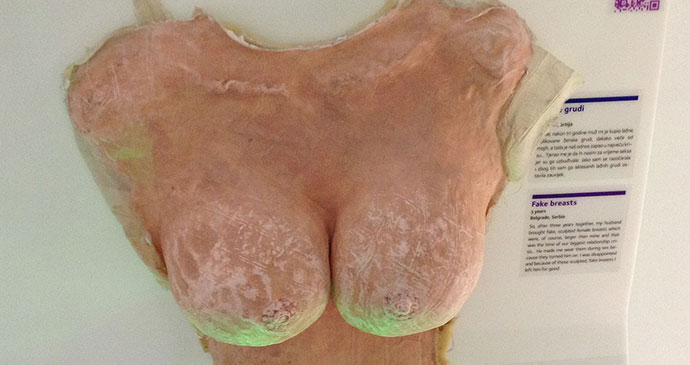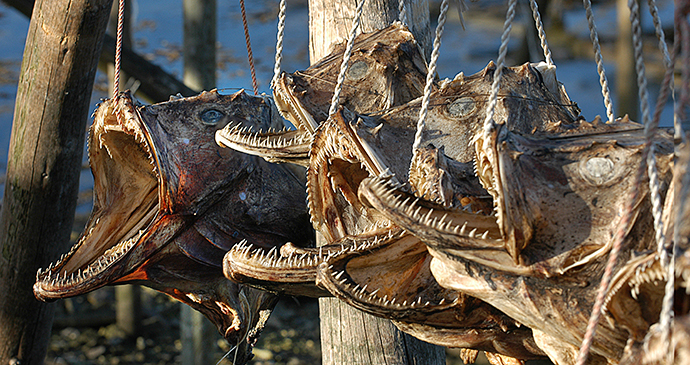Icelandic Phallological Museum, Reykjavik
With nearly 200 phallic specimens on display, visitors can contemplate the male organs of a seal, walrus, polar bear, a few whale species and a lot of very small rodents, as well as a number of more fanciful depictions in art and sculpture.

What seeks to be edgy, scientific or humorous actually comes across as a little creepy and eccentric, especially the lampshades made out of sheep scrotums and bullwhips made from a bull’s penis.
Museum of Broken Relationships, Croatia
When the Museum of Broken Relationships opened in Zagreb, in 2010, it instantly became the most talked about museum in the capital, attracting more international attention than perhaps any other. Physical fragments of people’s past, failed relationships are displayed alongside the story of that relationship’s demise, written by one of the former couple.

At turns fascinating, hilarious and deeply touching, this is unlike any other museum you are ever likely to visit. Highly recommended.
Pitt Rivers Museum, Oxford
To get to Pitt Rivers, you go through the first Natural History Museum (which itself features some spectacularly good carvings). It is one of those collections of obsessive eccentrics, and the building’s pretty odd too, with each pillar of a different stone, that kind of detail.
Here you will you find: shrunken heads; a magnificent Tahitian mourner’s costume collected during Captain Cook’s Second Voyage; Hawaiian feather cloaks in brilliant shades of red and yellow; ivories from the Kingdom of Benin; wonderful ancient masks worn by Japanese Noh actors; mummified people; a witch in a bottle; and American Indian skin shirts decorated with porcupine quills?
The place is crammed and many of the items are still labelled in the handwriting of the original curator. Pull open a drawer (under the display cases) and there may be magic objects including: amulets and charms; an intriguing collection of locks and keys; tools and weapons; voodoo dolls; weird musical instruments, mummified toads; or severed fingers.
I was lost in reverie at all these unlikely magical wonders and suddenly realised where I seemed to be – in the shop in Knockturn Alley in Harry Potter where the hero buys his magic wands, etc. Note the opening hours at the time of writing are limited (noon–4.30pm) and they run some really good free events aimed at children, usually on the first Saturday of each month.
London Fan Museum
Folding, not footie ones, thankfully, and the London Fan Museum contains the world’s biggest collection of more than 3,000 of them. A special exhibition of rather pretty Art Nouveau jobs opened in 1999, perhaps permitting the pun ‘Fan de siècle’. Plus advertising fans. Teashop with napkins folded in guess what shape. It’s just an eccentric thing to do, frankly.
Museo de la Silla de Asunción (MUSA) (Museum of Chairs), Paraguay
Go to this new and little-known Museum of Chairs if you possibly can: it is a circular tower with five floors of some 400 innovative and amusingly designed chairs. The collection has been put together by Argentine architect Jorge Nicolas Jury, who has lived in Paraguay for 37 years, and it is housed in a striking modern building of his own design.
There is everything from the apyka of the Guarani indigenous to the barber’s chair sat in by astronaut Neil Armstrong; from a child-size Chippendale-inspired gem to a 4m-high copy of a ladder-back chair by Charles Rennie Mackintosh (19th-century Scottish pioneer of industrial design); from the Zig Zag chair of Gerrit Rietveld to a polished wooden hand large enough to sit in.
The Paraguayan artists Carlos Colombino, Ricardo Migliorisi and the two sons of Hermann Guggiari – Sebastian and Javier – are represented here, with useful biographical details. An international library of books on design is planned for the future.
Roy Geddes Steel Pan Museum, Guyana
Having been playing for more than 50 years, Roy Geddes could be called a pioneer of steel pan music. Roy is a player, teacher and creator of steel pans and he’s opened a museum in Georgetown to share his passion.
In the gardens around his house visitors learn about the history of steel pan (dating back only to the 1940s) through photographs, recorded and written music, implements used to craft steel drums into the instruments and demonstrations of how to play steel pan, all from a living legend in the field.
Dried Fish Museum, Norway
The bizarre Tørrfiskmuseum (Stockfish Museum) in Lofoten is a real oddity. Proudly boasting to be the only stockfish museum in the world, the museum fishes out every last detail of the production of stockfish (dried fish), highlighting such oddball facts as 16 million kilograms of cod is hung out to dry every year in Lofoten and that during the drying process the fish loses 80% of its weight. Various forms of the fish are then sent for export to Portugal, Italy and Nigeria.

Having perused the various gutting benches, rasps, forks and other exhibits, be sure to catch the film shown upstairs (which was shown on German television and extensively features the museum’s dynamic curator) that is arguably the most illuminating element of the exhibition.
Museo della Merda, Emilia-Romagna
Founded in 2015, the ‘Shit Museum’ in Gragnano Trebbiense is the brainchild of Gianantonio Locatelli, owner of a dairy farm producing Grano Padano cheese – and 100,000kg of manure every day.
The tour takes in the farm’s ecological biomechanical works and the nearby methane-heated castle, featuring poop-inspired exhibitions, dung beetles and art and household items made from ‘Merdacotta’, Castelbosco’s answer to terracotta, which are also on sale in the museum’s Shit Shop.
Want to find out more about these weird and wonderful exhibitions? Take a look at our comprehensive guides: